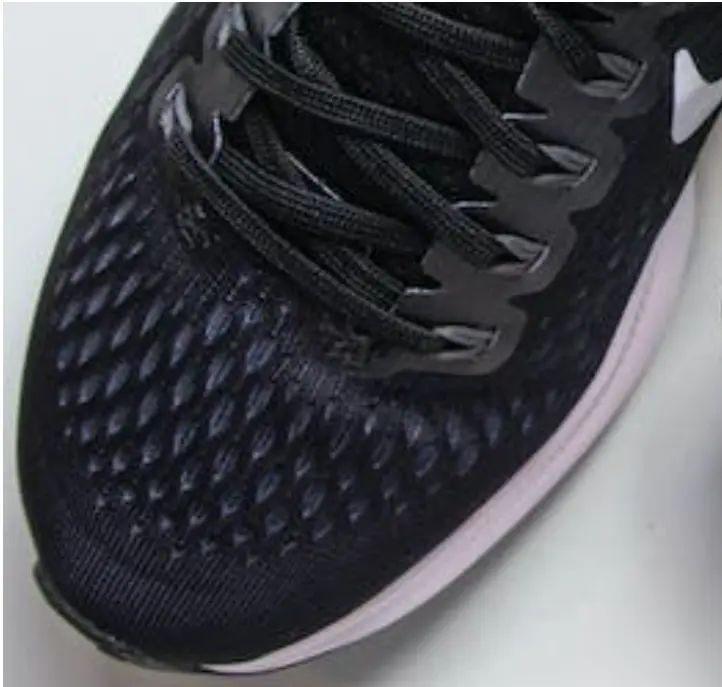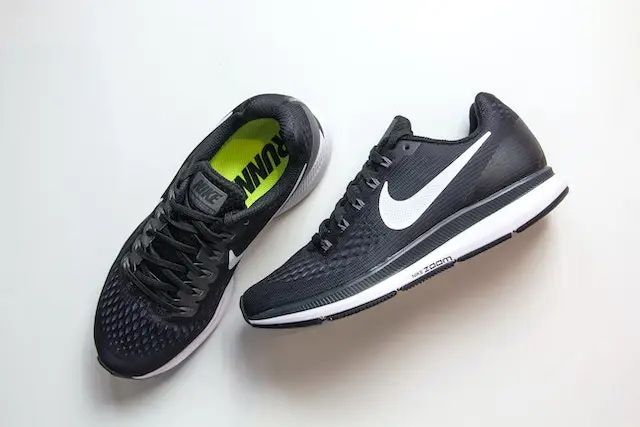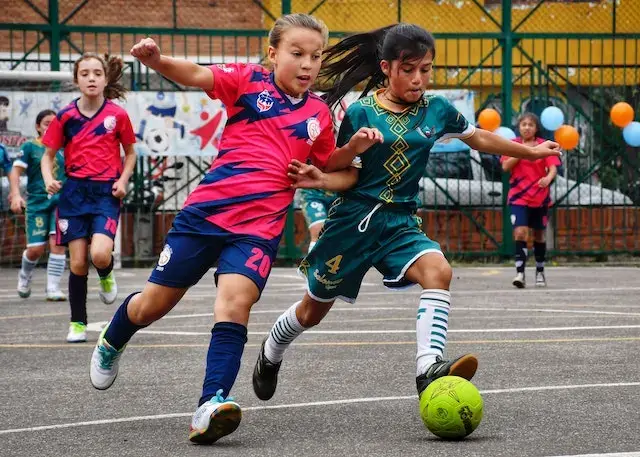3 of The Best Materials for Indoor Soccer Shoes
In indoor soccer, your game depends on your shoes and your shoes are only as good as the material they are made from. How do you know which materials are the ok, which are not ok and which are the best for your particular needs? To make this decision easy for you, this article discusses the merits of different types of elements used in the making of indoor soccer shoes.
To summarize, the best indoor soccer shoes should have a good fit, be comfortable, and have good traction. The best ones are made of natural leather in the upper, a PU midsole, and textured, gum rubber soles.
Before we begin to discuss the types of materials used in making them, let’s understand the different parts that make up an indoor soccer shoe.
Parts of An Indoor Soccer Shoe

Indoor soccer shoes have
- An Upper
- Top
- Lacing
- Toe box
- Tongue
- Collar
- Lining
- Midsole
- Insole
- Outsole
- Heel
You can learn more about the type of shoes best suited for indoor soccer.
What Are Indoor Soccer Shoes Made Of
Upper
The top part of the shoe and the one which comes in contact with the ball most often. The top, lacing, and toe areas all make up the upper. In the past, the most common material used for indoor soccer shoes upper used to be leather, either kangaroo leather or calfskin. Nowadays, most manufacturers prefer to use a mix of materials to ensure the best functionality of the shoes.
Top
The top protects the foot while kicking the ball. It provides housing for the lacing, toe box, etc. It should be thin enough that the ball can be felt somewhat while kicking as this improves ball control. If the top is too padded or made of thick material, the player will not be able to feel the ball as well and the precision of their control on the ball will reduce.
Ideally, the material for this part of the upper is leather, either synthetic or natural. Both have their pros and cons, but natural leather is the most preferred one.

Synthetic Leather material in indoor soccer shoes is typically made up of a combination of materials, including a base fabric, a plastic coating, and other additives.
- Base fabric is usually a nylon or polyester mesh, which provides strength and durability.
- Plastic coating is usually polyurethane (PU), which gives the material its leather-like appearance and feel.
- Additives, such as pigments and stabilizers, are added to improve the performance and durability of the synthetic leather.

The finished product is a material that looks and feels a lot like natural leather, but is more durable and less expensive.
Synthetic leather in sports shoes are of polyurethane (PU) leather, thermoplastic polyurethane (TPU) leather, or faux leather. Each of these have their own advantages and disadvantages which can be seen in the table below:
| PU | TPU | Faux Leather | |
|---|---|---|---|
| Durability | Highly durable | Highly durable | Durable |
| Water resistance | Slightly resistant | Highly resistant | Slightly resistant |
| Ease of cleaning | |||
| Price | Less expensive | More expensive than other synthetic leather shoes | Most affordable |
Types of Synthetic Leather Used in Indoor Soccer Shoes
Natural Leather is a high-quality material that is made from animal hides. It is soft and supple, and has the ability to mold to the shape of the foot over time, providing a comfortable fit. This is important because
Natural leather is also highly breathable, which helps to keep the foot cool and dry during play.
However, natural leather wears more quickly than synthetic leather so it is often treated with water-resistant and anti-stain coatings to improve its performance on the field.
Natural leather shoes are generally heavier than synthetic leather shoes. Although the weigh of a shoe can vary due to many reasons, natural leather is often denser and therefore weighs more.
It is also more expensive and requires more maintenance than synthetic leather.
| Natural Leather | Synthetic Leather | |
|---|---|---|
| Flexibilty | More flexible | Less flexible |
| Fit | Best fit | Less conforming fit |
| Weight | Heavier | Lighter |
| Durability | Less durable | More durable |
| Price | More expensive | Less expensive |
Lacing
Laces on indoor soccer shoes are very important for fitting the shoe around the foot. Players prefer a long lacing system, with plenty of holes to create a balanced fit.
Laces are most commonly made of polyester or nylon, because both of these are light, durable and water resistant. Other materials commonly used in indoor shoe laces are cotton and polypropylene.

Tongue
The tongue adds a layer of protection between the foot and the outside. It provides additional support by adding more structure to the shoe. It also helps to evenly distribute the pressure from the laces.
The tongue is most often made of synthetic materials like neoprene mesh. It is also frequently padded, but soccer players prefer thin tongues as they like to retain sensitivity for the ball.
Toe cap
In some indoor soccer shoes, the area around the toes is reinforced to make it more durable. For obvious reasons, this part of the shoe often suffers more wear and tear. Carbon fiber or an additional layer of hard rubber is used for reinforcing the toe area.

Collar
The part of the shoe surrounding the ankle. In other sports shoes, the collar provides ankle support but in indoor soccer shoes, its purpose is to simply make the shoe more comfortable in wearing by enhancing the sock like feeling. Collar are made of the same material as the lining and tongue, that is, mesh. It can be padded but padding increases the weight of the shoe and indoor soccer players avoid added weights.
Lining
In indoor soccer shoes, the lining not only prevents irritation from the inside of the shoe, it also helps in making the shoe snugger. Linings are made of thin layers of neoprene mesh.
Insole
Insoles are a thin layer of material directly beneath the foot. They are often removeable and can be changed for a better fitting one. They can be made of a number of synthetic materials like
- EVA (ethylene-vinyl acetate)
- PU (polyurethane)
- Gel
Perhaps the most difficult task for a shoe manufacturer is to find the design for a shoe that can offer the right balance of comfort, cushioning, and lightweightedness. They achieve this by manipulating the insole and midsole materials in different variations. Find out more about the synthetic materials used in shoes by reading this Wikipedia article: Football boots>>.
Midsole
The midsole, as the name implies is the layer between the insole and the outsole. It provides cushioning to the foot but is kept thin to keep the shoe from becoming too bulky or heavy.
Midsoles are made of PU or EVA like insoles but are slightly thicker. Some high-end shoes use Phylon in the midsole. Phylon is lightweight and provides better cushioning then EVA or PU.
Outsole

For indoor soccer shoes, perhaps the most important part of the shoe is the outsole. For a game that is played at such a high pace with furious action going on at every instant, it is extremely important to have shoes that keep you literally grounded.
Outsoles in indoor soccer shoes are almost universally made of gum rubber. There are patterns etched into the gum rubber to increase the traction. These are shallow cuts, not deep enough to mark the indoor courts or to damage the light carpet sometimes used for indoor soccer.
Sometimes, extra rubber bits are added to the sole patterns to grant balance to the player when they make sudden turns in any direction.
Since it is soft, gum rubber is treated with chemicals to make it resistant to wear and tear, and also to make it somewhat water resistant.
Heel
Unlike most sports shoes, there is only a minimal heel support in most indoor soccer shoes in the market these days. In order to increase the speed performance of players, shoe makers forgo with all but the barest of comforts. Most of the heel cushion is provided by the EVA/PU in the midsole or the insole.
Conclusion
There is a huge variety to choose from, if you are focusing on the specific materials used to make indoor soccer shoes. Manufacturers are continuously testing and updating there supplies in order to produce the best finished products. In our experience, the best shoes in terms of comfortable and durable materials are made by Adidas or Nike (cliché, but true). You can check out or review of Nike’s indoor soccer shoes.
And here’s a general review of different indoor soccer shoes in the market.


